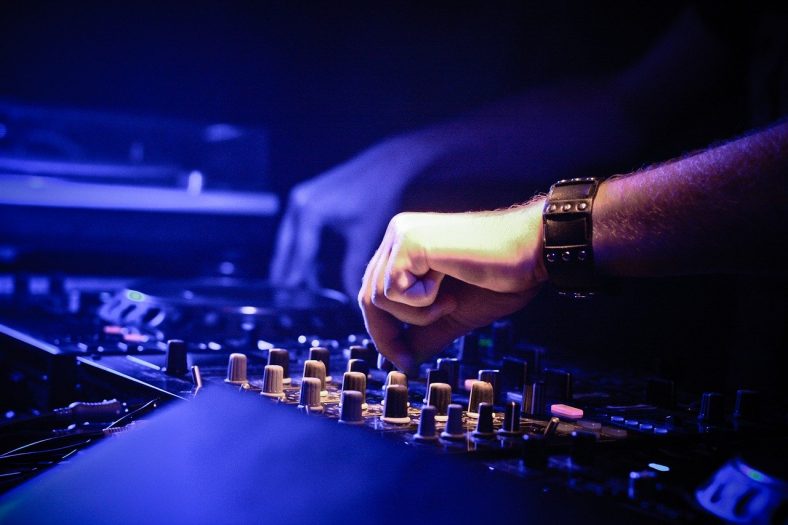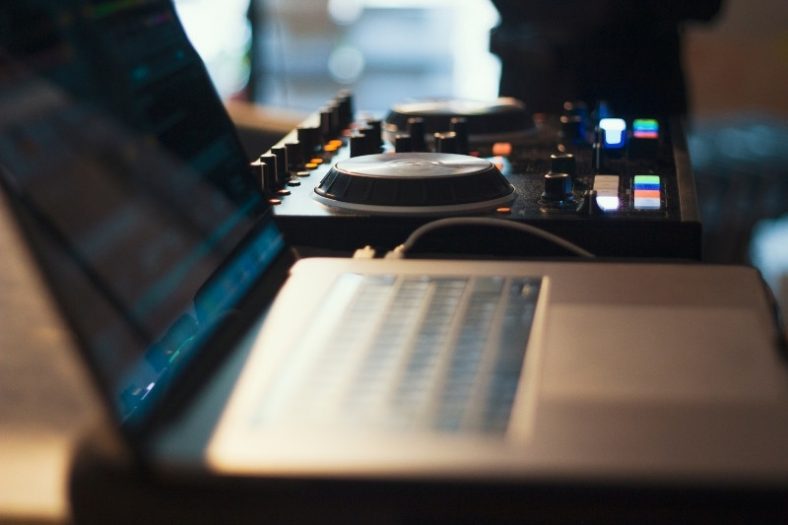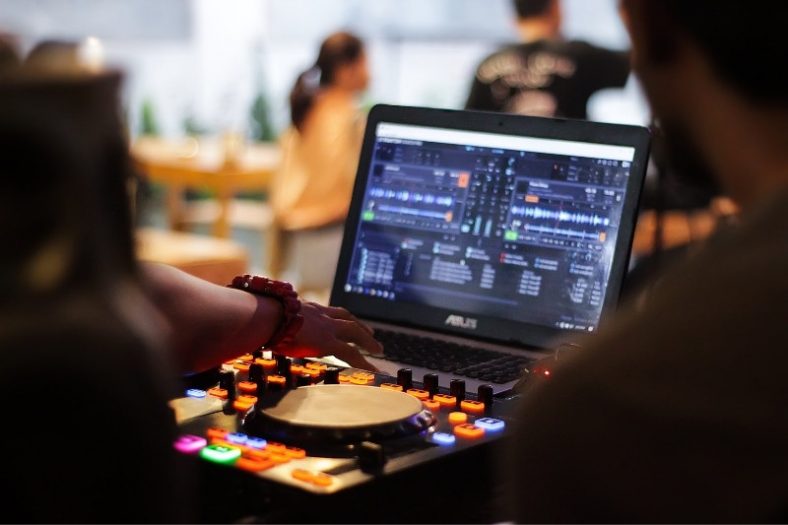The Music Mixing Cheat Sheet Every Beginner DJ Should Use

DJing may appear to be an overwhelming procedure at first. Many people enter it unprepared, and it’s all too often the case that they get everything wrong. Many people fail or give up in this process, but if you follow a specific procedure and take it slow, you might just make it through.
For a beginner DJ, there are many things to learn. You would need to learn track arrangement, which tracks go with which, and what works in a live setting, and what doesn’t.
Does this sound a little overwhelming? Fret not. In this article, we will outline the basic things you need to be aware of as you start your music career. This will help you create great music that your audience will enjoy – and want more of.
Let’s get started then, shall we?
Audio mixing involves blending recorded tracks using processes like Reverb, EQ, and Compression. By adjusting levels, panning, and using time-based audio effects – chorus, delay, and reverb – mixing helps to bring out the best in your music mix or multi-track recording.
Contents
How are Songs Structured?
When we talk about song structure, we mean that it’s organized into different sections. A typical song structure thus includes a verse, chorus, and bridge. The arrangement starts with an intro and ends with an outro as follows:
1. Intro
Found at the beginning, the intro sets up the song and establishes its basic elements. These include the key, rhythm, tempo, energy, and attitude. A typical intro consists of four bars.
2. Verse
A song usually has multiple verses featuring different lyrics. The melody is often the same across the verses.
3. Chorus
This is the song’s climax and is repeated again and again. More often than not, it’s the song’s title.
4. Bridge
The bridge offers relief from the repetition that occurs in many songs. It features different lyrics and the music is different too. It also begins on a different chord from both the verse and chorus.
Before you learn how to mix or even basic music theory, you need to know how to structure music. How do you understand ways to arrange a piece of music properly? By looking for great music and copying it.
To do this, drag songs into your DAW (Digital Audio Workstation) and note where things happen – intro, breakup, and breakdown – using place markers. When you repeat this 15 times, you’ll begin to notice recurring patterns.
If you spend time listening to music, you will develop a keen understanding of song structure. Each song offers you an opportunity to learn how musicians use the different sections to tell their stories.
How to Use Beatmatching

Today, you can use a sync button to do your Beatmatching. Still, learning how to beatmatch is a good idea. Why so? Because your automated software could fail to get the right track tempo or get it all wrong. In case of a glitch, a backup will always come in handy.
Besides, bonding with your music and methods more makes you a much better DJ. A good beat-matcher can mix two tracks seamlessly and flawlessly, maintain them with minimal effort, while also doing creative loops, effects, and filters. Note that beatmatching gets better with practice.
After adding beatmatching to your skills repertoire, what next?
How to Use Crossfades
Once your two tracks are beat-matched and are playing harmoniously, you need to transition from one track to the other. Timing and smoothness are key here. Using the crossfaders, you can move smoothly from one deck to the other.
As the DJ, you decide when to transition and the length of your crossfade. Ideally, it’s good to allow for a discernable overlap during which you can listen to elements of both tracks playing. This means that your crossfades shouldn’t be too abrupt.
With time, you’ll get the hang of it and become quite adept at working the crossfades. Also, depending on the genre of music you are playing, you will know at what pace to move the fader across.
Remember, timing is crucial. The key to a successful mix is not how you do it, but when. That’s where a basic understanding of song structure and the tracks you are using comes in.
How to Choose a Good Mix Point?

After crossfading, you need to align your tracks. This creates a good mix. When you understand song structure, you can align the tracks’ section boundaries and thereafter fade in and out.
While some music genres are much easier to mix than others, music that features defined beats is easier to beatmatch. For example, hip-hop is a little harder to mix since the vocals leave minimal instrumental in and out of every given tune.
Consider the music speed. A high BPM ( Beat Per Minute) means you get more beats throughout the record. This allows you to get a good beat match. Nevertheless, it’s good to stick to the music you are passionate about as it will show in your mixing.
It’s also advisable to stick to one genre while you’re learning; learning becomes easier since your tracks have the same style and BPM. Once you get the basics right, you can proceed to mix different genres.
Adding in Looping
Loops help to enhance sounds, making them unique. If a track consists of a short beginning or outro, you can create longer instrumentals using loops. This will help you mix in and out of a track.
When performing a loop, the DJ picks a section of a song and has the mixer play the section repeatedly. Learning how to loop is an integral part of learning how to mix.
A loop is easy to set up. Besides, today’s software comes with an auto loop function. When you press the button, auto loops search for the nearest beat your track continues playing normally once you press exit. Most loops range between 1/32 and 32 beats.
You can use DJ loops to help you learn how to time loops and how to fit together the right tracks. Once you can incorporate loops into your tracks with ease, start creating your own.
Adding Cue Points
Finally, the last thing to do before you get to play your music is adding cue points. Cue points are a critical part of a DJ’s toolkit. They allow you to speed up the mixing and track selection.
Cue points consist of markers placed in your dj software to highlight a particular section of a track. You can jump to preset cue points at the touch of a button. good dj controllers come equipped with performance pads that correspond to the cue points.
Set up cue points at key moments when adding new tracks to your music library. This will help you get more connected to your tracks and help you understand their structure.
With cue points in place, you will review your tracks faster when on the decks. You will also determine the perfect track to follow your current track in a cinch!
Managing Your Library

Lastly, you need to manage your library. Good library management will help you create a smoother track selection as a way of enhancing your DJ performance.
For instance, if you arrange the tracks on the lists in a certain order, you’re creating checkpoints to assist your recall information while you’re working.
When it comes to library management, I believe that it’s better to adapt your own requirements. You’d need to develop a system that is personalized for you. Other DJs might be able to offer you a few pointers and ideas, but your own way will ultimately be the best one.
Conclusion
At the end of the day, being a good DJ takes time and experience. The thing is, you need to know what elements are contained in both tunes and decide whether they complement each other to create your mix.
You also need to consider factors such as the exact point you decide to mix, musical style, genre, key, and energy level. Keep learning and always look to improve yourself.
Want to know the best way to learn? Always record your DJ mixes and listen to the playbacks.
Develop your signature style. Bring in your uniqueness as every DJ is different. Don’t be afraid to experiment with SFX and Sound Effects too. Take control of your creativity and propel your music to the next level. Above all, have fun!





